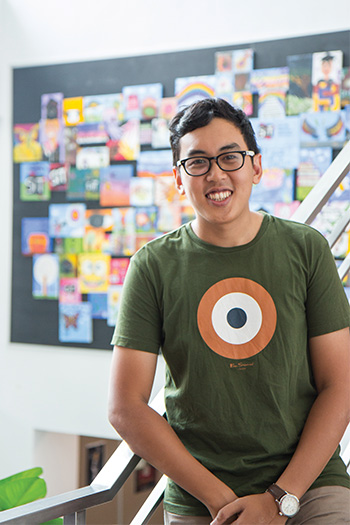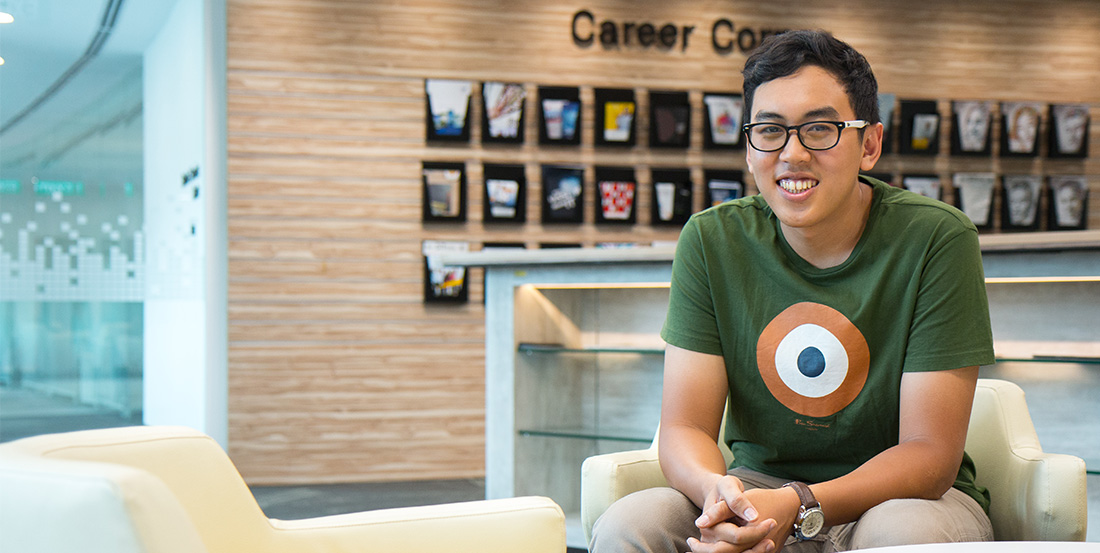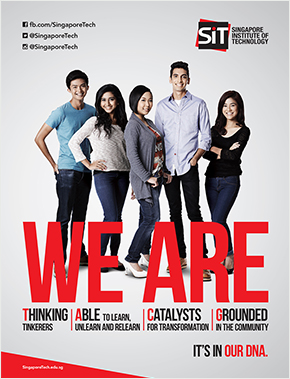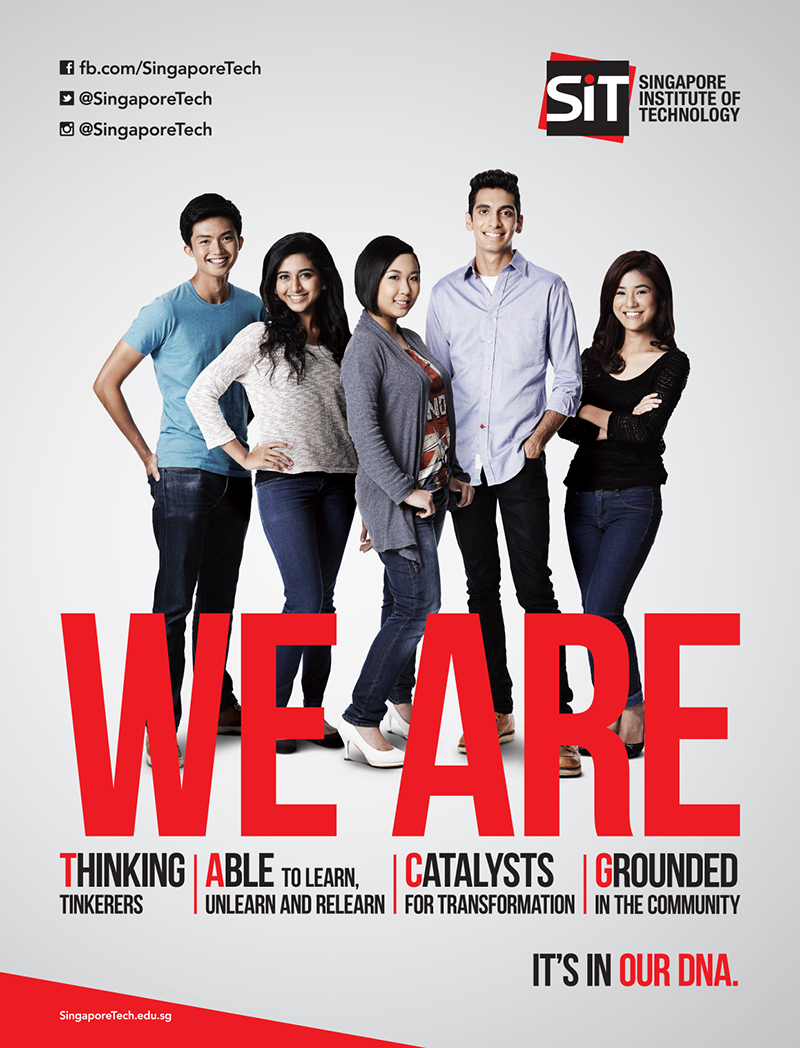Skilled and 100% industry-ready the moment they embark on their careers – this is the new breed of graduates Singapore’s newest university Singapore Institute of Technology (SIT) is nurturing through its industry-focussed degrees and innovative applied learning pedagogy.
Established in 2009, SIT is Singapore’s fifth autonomous university. The university aims to produce work-ready graduates who don’t just have a paper certificate but are passionate and skilled in their areas of interest. SIT’s industry-focussed education gives them a head-start in their career. Going beyond the confines of the classroom or textbooks, there is a strong emphasis on applied learning, integrating both theory and practical work with an extended eight to 12-month Integrated Work Study Programme (IWSP).
The result of this innovative pedagogy? Students graduate as highly sought-after industry professionals who are equipped to meet the diverse and constantly changing needs of Singapore’s economy.
SIT undergraduate Tengku Muhammad Khalaf, 24, shares his experience. He tells us why he chose to pursue his education at SIT, and how the university has helped him grow.
Why did you choose to study at SIT?
Tengku Muhammad Khalaf: When I first applied for university, I didn’t manage to qualify for any degree because my grades from polytechnic weren’t that good. So, I decided to take a break from my studies to gain some work experience first.
After working for two years in construction, my friend told me about a new degree – Sustainable Infrastructure Engineering (Land) – that just came up in SIT. Because it was in line with what I was doing at the time, my interest was piqued. I did some research and found out that SIT adopts a holistic approach in assessing students for admission to their programmes. They don’t just look at the GPA of applicants, they also look at other components such as work experience. So I decided to give it a shot, and here I am today, glad to be part of SIT.

Tengku Muhammad Khalaf
Studying Bachelor of Engineering
with Honours in Sustainable
Infrastructure Engineering (Land),
Singapore Institute of Technology
“We’re not learning just for the sake of getting a good score, but building on a solid foundation of learning, like building blocks.”
What do you think is unique about an education at SIT?
Khalaf: My favourite part about SIT’s curriculum is the practice of continual assessment. My course is 50 per cent continual assessment and 50 per cent exams. I believe that this is the way to go because it helps reinforce your understanding of concepts throughout the course. It makes sure that you actually learn things along the way, instead of just cramming information at the last minute. So we’re not learning just for the sake of getting a good score, but building on a solid foundation of learning, like building blocks.
It also helps that the cohort for my course isn’t too big, allowing the professors to attend to questions more readily and to have a more personal connection with the students. The size of the cohort also encourages group study which allows easy exchange of information between students. In my own study group, there’s Jia Rong, Kamil, Zacky, Vivienne, and Qama in the group. We study a lot together, and there was even once when we had an overnight study session. It’s nice to have students support each other in their studies.
Why did you choose to pursue Sustainable Infrastructure Engineering (Land) at SIT? What sparked your interest in this field?
Khalaf: As I mentioned before, I worked for two years in construction before entering SIT. I did things like cabling work for the SP PowerGrid and roadwork with LTA. While working, I discovered that I wanted to go into tunnelling because of how interesting and exciting it was.
I feel that being able to build things underground is an amazing achievement. When we take the MRT, we don’t think much about it, but it’s actually pretty incredible to be able to dig into the earth and occupy a space big enough underground to fit a train. Also, the machines used to do the tunnelling are out of this world. I couldn’t believe my eyes when I saw them first-hand. There was literally a giant drill used to dig out tunnels!
I enjoyed handling projects and doing all the coordinating while I was working, and I felt the experience in SIT would be similar. At SIT, there’s a very hands-on approach to learning. We get to do a lot of projects and practical work instead of just focussing on the theoretical. This made the classroom come alive so that definitely appealed to me.
What would you recommend about SIT to others?
Khalaf: Our SIT-conferred degree programmes have an Integrated Work Study Programme (IWSP) component which provides students with the opportunity to undertake real work. The IWSP is specifically catered to the needs of the industry.
In my course, we have a one-year long IWSP stint at a company which the university has partnered with. The long IWSP period allows us to really assimilate with the companies and contribute to real engineering work.
Personally, I feel that the IWSP is a great feature of SIT’s education. After experiencing the working world myself, I understand how important experience is. I myself faced some challenges because of my lack of work experience. So i definitely feel that the IWSP is a huge benefit.
What advice do you have for future students of SIT?
Khalaf: Even if you think your grades aren’t up to the mark, don’t be discouraged from trying. SIT doesn’t just look at the GPA of applicants. They look at individuals and assess them based on their potential. In my case, I was accepted due to my work experience. And if you’re afraid that you won’t be able to keep up, don’t be. My GPA went from 2.7 in polytechnic to 4.8 here! So there’s always a chance for you to improve no matter what your current circumstances are.



